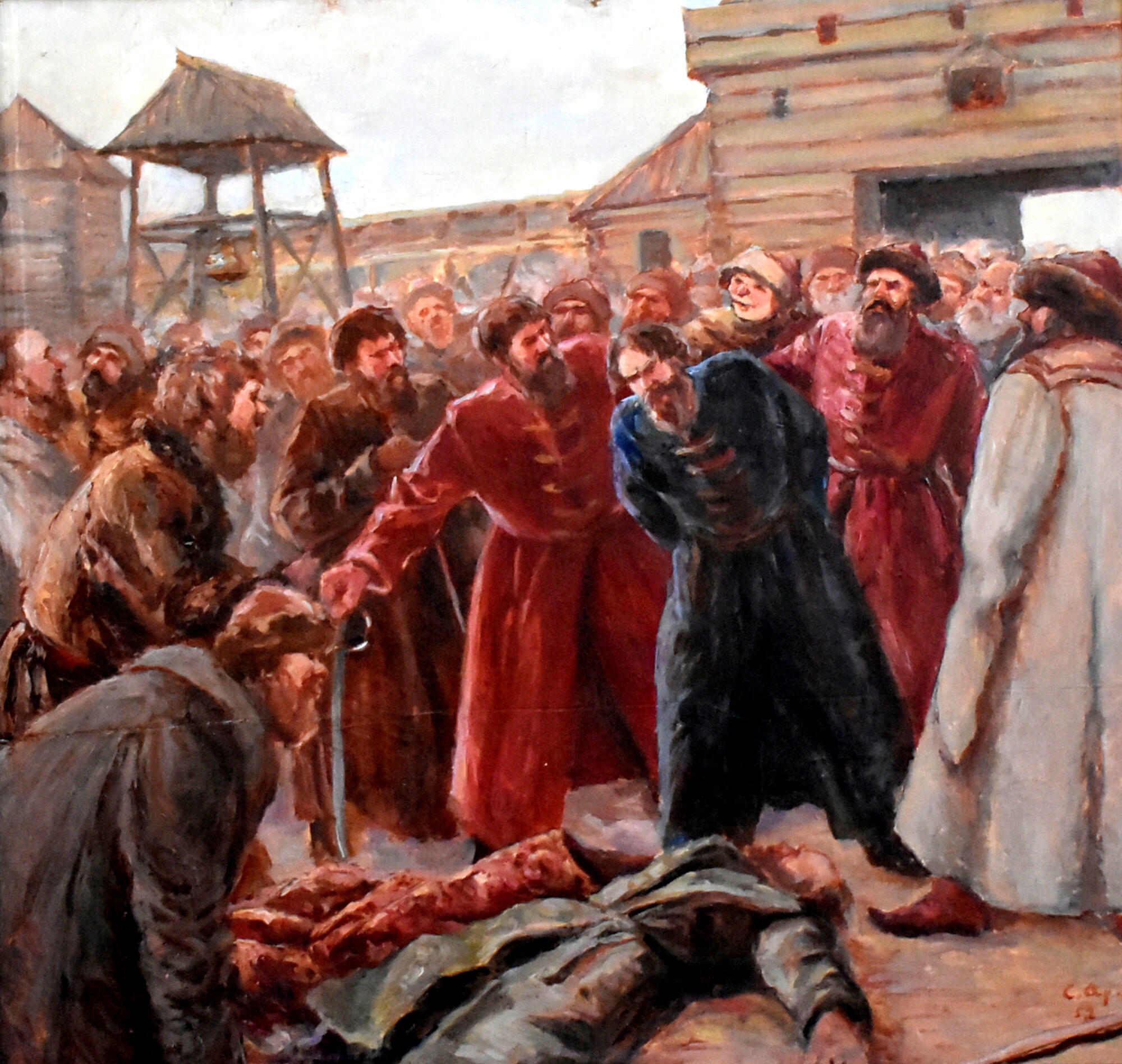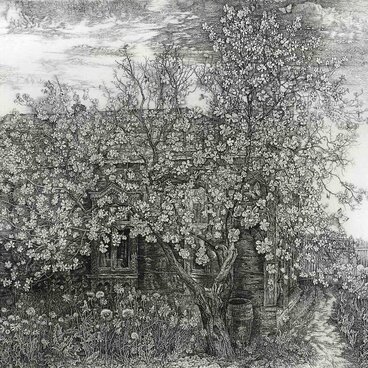The painting “Rebellion in Kozlov in 1648” by Sergey Georgievich Arkhipov became part of the collection of the Michurinsk Museum of Local Lore in the 1950s. The piece depicts a scene of the rebellion in the town of Kozlov during the Salt Riot, which was an echo of the Moscow rebellion.
The decree issued on 7 February 1646 introduced a fairly high tax on salt. It was expected to bring considerable advantages, because the heavy duties, paid to maintain the military (streltsy) and the roads (yams), were abolished after its introduction. In reality, however, the salt tax came down heavily on the poor. The high cost of salt resulted in foodstuffs that people stored for a long time — fish and meat — being spoiled. One of the first to respond to this rebellion was the town of Kozlov. Its residents were dissatisfied with the management of voivode Roman Fedorovich Boborykin, who appropriated for himself several granaries with bread, suburban meadows, and horses. Besides, the local voivode forced servicemen to work constantly on repairing town and district fortifications.
In 1647 the townspeople sent a petition to the capital. One of the serious accusations against Boborykin was the incident concerning the death of a Chelnava strelets who was tortured in Kozlov on the orders of the voivode. A Moscow commission headed by prince Lobanov-Rostovsky examined these accusations and some of them were indeed confirmed. Boborykin had to pay 50 rubles to the widow and children of the strelets.
In the spring of 1648, the number of petitions from Kozlov increased once again. A group of locals traveled to Moscow to submit them. There they became direct witnesses to, and possibly participants in, the events in Moscow known as the Salt Riot.
In the summer of 1648, the petitioners returned to Kozlov and told the locals about the Moscow riots. The movement against the hated voivode and his circle revived with a new vigor in the town. Voivode Boborykin managed to escape from Kozlov. Regimental Cossacks were the instigators of the rebellion. People of Kozlov wanted to beat to death children of boyars and “any officials who were involved in stealing”. The trading people’s shops were ransacked. Despair and anger among the lower classes reached such an extent that the salt tax was soon abolished.
The painting is one of the works created by the artist as an illustrative addition to the general exhibition of the history hall of the Michurinsk Museum of Local Lore.
The decree issued on 7 February 1646 introduced a fairly high tax on salt. It was expected to bring considerable advantages, because the heavy duties, paid to maintain the military (streltsy) and the roads (yams), were abolished after its introduction. In reality, however, the salt tax came down heavily on the poor. The high cost of salt resulted in foodstuffs that people stored for a long time — fish and meat — being spoiled. One of the first to respond to this rebellion was the town of Kozlov. Its residents were dissatisfied with the management of voivode Roman Fedorovich Boborykin, who appropriated for himself several granaries with bread, suburban meadows, and horses. Besides, the local voivode forced servicemen to work constantly on repairing town and district fortifications.
In 1647 the townspeople sent a petition to the capital. One of the serious accusations against Boborykin was the incident concerning the death of a Chelnava strelets who was tortured in Kozlov on the orders of the voivode. A Moscow commission headed by prince Lobanov-Rostovsky examined these accusations and some of them were indeed confirmed. Boborykin had to pay 50 rubles to the widow and children of the strelets.
In the spring of 1648, the number of petitions from Kozlov increased once again. A group of locals traveled to Moscow to submit them. There they became direct witnesses to, and possibly participants in, the events in Moscow known as the Salt Riot.
In the summer of 1648, the petitioners returned to Kozlov and told the locals about the Moscow riots. The movement against the hated voivode and his circle revived with a new vigor in the town. Voivode Boborykin managed to escape from Kozlov. Regimental Cossacks were the instigators of the rebellion. People of Kozlov wanted to beat to death children of boyars and “any officials who were involved in stealing”. The trading people’s shops were ransacked. Despair and anger among the lower classes reached such an extent that the salt tax was soon abolished.
The painting is one of the works created by the artist as an illustrative addition to the general exhibition of the history hall of the Michurinsk Museum of Local Lore.




